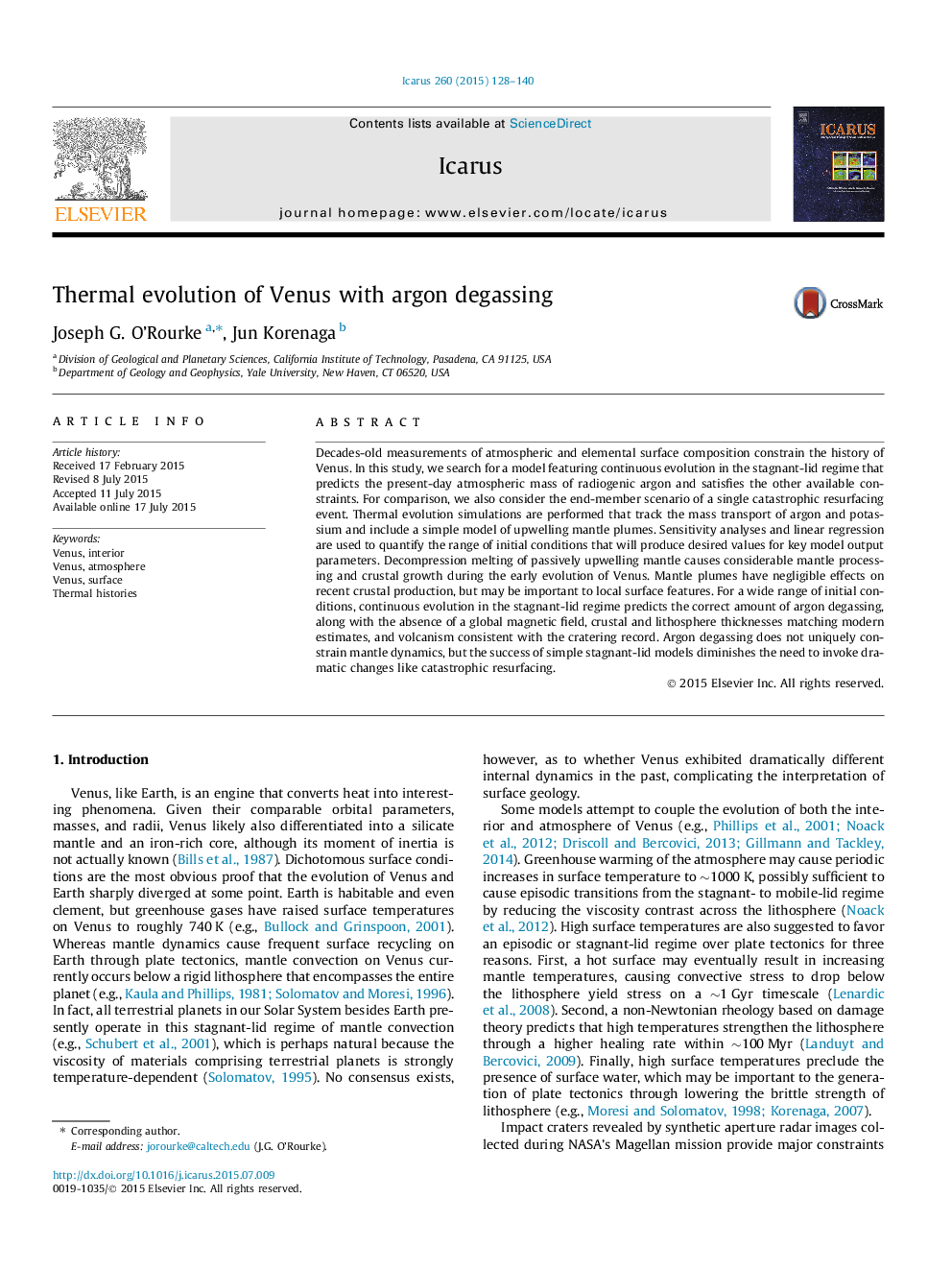| Article ID | Journal | Published Year | Pages | File Type |
|---|---|---|---|---|
| 8136007 | Icarus | 2015 | 13 Pages |
Abstract
Decades-old measurements of atmospheric and elemental surface composition constrain the history of Venus. In this study, we search for a model featuring continuous evolution in the stagnant-lid regime that predicts the present-day atmospheric mass of radiogenic argon and satisfies the other available constraints. For comparison, we also consider the end-member scenario of a single catastrophic resurfacing event. Thermal evolution simulations are performed that track the mass transport of argon and potassium and include a simple model of upwelling mantle plumes. Sensitivity analyses and linear regression are used to quantify the range of initial conditions that will produce desired values for key model output parameters. Decompression melting of passively upwelling mantle causes considerable mantle processing and crustal growth during the early evolution of Venus. Mantle plumes have negligible effects on recent crustal production, but may be important to local surface features. For a wide range of initial conditions, continuous evolution in the stagnant-lid regime predicts the correct amount of argon degassing, along with the absence of a global magnetic field, crustal and lithosphere thicknesses matching modern estimates, and volcanism consistent with the cratering record. Argon degassing does not uniquely constrain mantle dynamics, but the success of simple stagnant-lid models diminishes the need to invoke dramatic changes like catastrophic resurfacing.
Related Topics
Physical Sciences and Engineering
Earth and Planetary Sciences
Space and Planetary Science
Authors
Joseph G. O'Rourke, Jun Korenaga,
